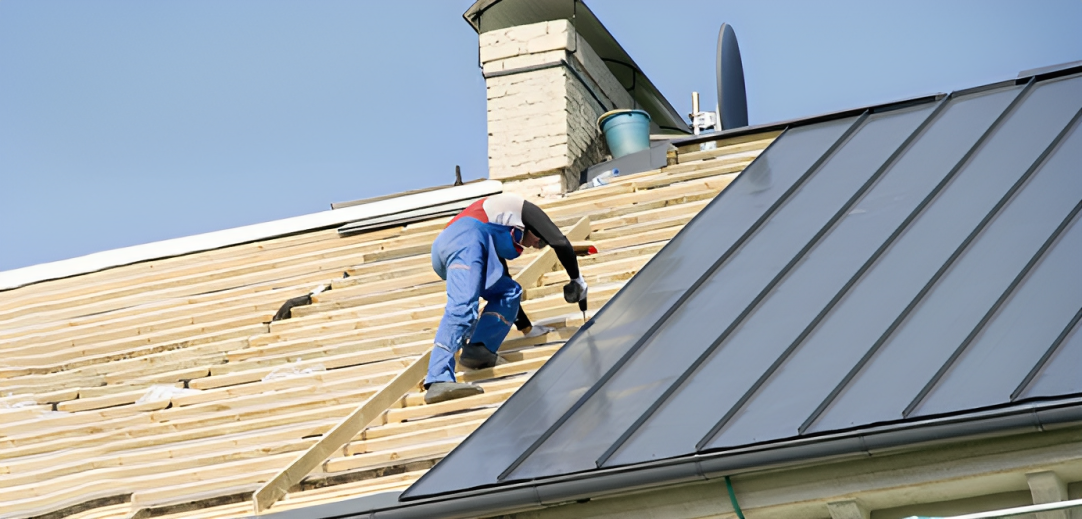
Things to Consider Before the Replacement of Roofing Sheets
October 04th, 2023
Category: All Blogs, General
The roof of your home is one of its most critical components, providing protection against the elements and ensuring your family’s safety. Over time, roofing materials deteriorate due to exposure to weather conditions, and replacement becomes inevitable. When the time comes to replace your roofing sheets, it’s essential to approach the project with careful consideration to ensure the best outcome. In this blog post, we’ll discuss the key factors to consider before embarking on a roofing sheet replacement project.
- Assess the Current Condition
Before making any decisions, start by assessing the current condition of your roofing sheets. Look for signs of damage, such as leaks, rust, or loose or missing screws. Evaluate the overall integrity of the sheets and determine if they can be repaired or if a full replacement is necessary. A professional inspection can provide a detailed analysis of your roof’s condition and help you make an informed decision.
- Choose the Right Material
Selecting the right roofing material is a crucial decision that will affect your home’s aesthetics, energy efficiency, and longevity. Some common roofing sheet materials include:
- a) Metal Sheets: Durable and energy-efficient, metal sheets come in various styles and colors, making them a popular choice for many homeowners.
- b) Asphalt Shingles: These are cost-effective and come in a wide range of styles. They are relatively easy to install but may have a shorter lifespan compared to other materials.
- c) Tile or Clay Sheets: Known for their durability and aesthetic appeal, tile or clay sheets can be a great choice if your budget allows.
- d) Slate Sheets: Extremely durable and elegant, slate roofing sheets are often considered a premium option.
Consider your budget, climate, and personal preferences when choosing the right material for your roofing sheets.
- Evaluate Roof Slope and Design
The slope and design of your roof play a significant role in material selection. Some materials are better suited for flat or low-slope roofs, while others work well on steep-slope roofs. Consult with a roofing professional to determine which materials are suitable for your specific roof design.
- Understand Local Building Codes
Each region has its building codes and regulations for roofing materials and installation. Familiarize yourself with these codes to ensure compliance. Working with a licensed and certified roofing contractor will also help you meet local requirements and obtain the necessary permits for your project.
- Consider Energy Efficiency
Energy-efficient roofing materials can help reduce your home’s energy consumption and utility bills. Some roofing sheets come with reflective coatings that reflect solar heat, keeping your home cooler in the summer. Investing in energy-efficient roofing can provide long-term savings and environmental benefits.
- Budget and Financing
Determine your budget for the roofing sheet replacement project. Obtain quotes from multiple contractors to understand the cost involved fully. Explore financing options if needed to ensure that the project fits comfortably within your financial means.
- Choose a Reputable Contractor
Selecting a qualified and experienced roofing contractor is critical to the success of your project. Research local roofing companies, check their credentials, and read customer reviews. Ask for referrals from friends or family who have had roofing work done. A reputable contractor will provide a detailed estimate, explain the entire process, and answer any questions you may have.
- Timing and Weather Consideration
Consider the timing of your roofing sheet replacement project. It’s generally best to undertake this work during dry and mild weather conditions. Ensure that you have a plan in place for protecting your home from unexpected rain or storms during the project.
- Warranty and Maintenance
Discuss warranties with your roofing contractor and carefully read the warranty information provided by the roofing material manufacturer. Understand what is covered and for how long. Additionally, discuss post-installation maintenance to ensure the longevity of your new roofing sheets.
Conclusion
Replacing roofing sheets is a significant home improvement project that requires careful planning and consideration. By assessing your roof’s condition, selecting the right materials, following local regulations, and working with a reputable contractor, you can ensure a successful roofing sheet replacement that enhances the durability, aesthetics, and energy efficiency of your home. Remember that a well-maintained roof not only protects your investment but also provides peace of mind for you and your family.
Leave a Comment
